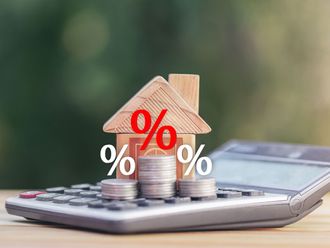Sukuk, the substitute to conventional bonds, have been gaining popularity among not only Muslims and Islamic investors, but also non-Muslim and conventional investors seeking to diversify their portfolios. This is due to the attractive returns on offer compared to traditional fixed-income securities. For instance, the S&P Mena sukuk index, which tracks the performance of dollar-denominated investment-grade sukuk issued in the Middle East and African market, posted a 4.47 per cent gain in 2016, in contrast to a 3.99 per cent for the S&P bond index, which includes conventional bonds with the same characteristics.
The Benefits of Sukuk
However, it’s not only returns that make sukuk appealing for new and existing investors. The volatility of sukuk has historically been lower — and is something that can be really essential in the current market situation. Sukuk is structured to generate returns to investors from their undivided ownership of the Sukuk’s underlying assets without infringing Islamic law (that prohibits ‘riba’ or interest and other Sharia non-compliance elements).
Liquidity is one of the most significant features that is crucial for investors. Many of them look for investments which can be turned into cash without any time loss or financial expenses. This makes Sukuk an ideal investment option — since they are traded on the secondary market where they can be easily bought and sold at the current market price. Another advantage sukuk have over conventional bonds is that in general, they are based on real assets with tangible value — such as ownership in particular projects, properties or special investments. Due to their unique structure and market dynamics, sukuk returns tend to be less correlated with other parts of the global fixed-income market.
Are Sukuk sensitive to interest rate shocks?
In December 2016, the Federal Reserve made its second interest rate hike after almost a decade of keeping rates close to zero — and suggested that two to three more hikes could be on the way for 2017. However, when interest rates rise, bond/sukuk prices tend to fall. Although sukuk is priced at a profit rate, it is generally exposed to interest rate movement. The impact depends on a bond’s duration (or its sensitivity to interest rate risk). The higher the duration, the more change in interest rates will affect a bond’s price. Here sukuk may offer a potential advantage in a rising interest rate environment. Typically, sukuk portfolios have a lower duration and thus less interest rate sensitivity than other fixed-income securities.
Popularity of Sukuk
As part of an individual’s investment portfolio, sukuk can provide you with exposure to some of the fast-growing and most financially sound economies in the Middle East and South-East Asia countries that are usually under-represented in many traditional bond indices and funds. At Noor Bank, for example, we have one of the most active trade desks, with the ability to purchase sukuk across issuers from different geographies. Clients can also avail a Leverage facility to enhance their yield or avail Islamic Covered Drawings a substitute to Overdraft) to manage their liquidity.
Are there enough Sukuk issuances?
New sukuk issuances with a maturity over 18 months from the core markets of the Gulf Cooperation Council (GCC) region, Malaysia, Indonesia, Turkey and Pakistan rose to $40 billion (Dh147 billion) in 2016 from about $32 billion a year earlier. This represented 28.5 per cent of total bond and sukuk issuance in these markets in 2016. Global sukuk issuances increased marginally by 2.2 per cent in 2016 to reach $77.1 billion as compared to $75.4 billion during 2015. This increase was much smaller than the 5.5 per cent growth seen in 2015.
Before investing in a sukuk, you should analyse:
• Who the issuer is: This usually is a Corporate or a Government Entity. Government sukuk usually have a lower risk.
• Tenor: Match the tenor to suit your requirements.
• Credit Rating: International rating agencies such as Moody’s, Fitch or S&P assign credit ratings. The higher the rating, the lower the risk.
• Hierarchy: Hierarchy’s such as Senior Secured sukuk, subordinated sukuk, unsecured sukuk etc, can make a huge difference on the risk you take.
• Yield to Maturity (YTM): The higher the YTM, the better the investment.
• Duration: The lower the duration, the less risky the investment.
• Type: Perpetual versus a Fixed Maturity issue: Perpetual Sukuk, carry a higher risk which is normally compensated by higher returns.
• Fixed to Floating rates: In certain cases, a sukuk can convert from Fixed rate to Floating rate.
• Size of the issue: A larger size indicates the ability of issuer to seek finance and also the appetite in the market — and hence liquidity for the investor.
• Lot Size: Typically, sukuk can be traded in lot sizes of USD 200,000.
• Stability of the issuer: How long the issuer has been operating, and if they have strong financials as well as a sound business strategy.
Remember, a steady income (which is generally better than a deposit rate) coupled with lower risk, can make Sukuk a very attractive investment vehicle for you. However, before you invest, make it a point to meet with your Banking Relationship Manager to analyse and choose the sukuk that best suits your needs.
— Renoy Kundukulam is the Head of Priority Banking, Noor Bank.











